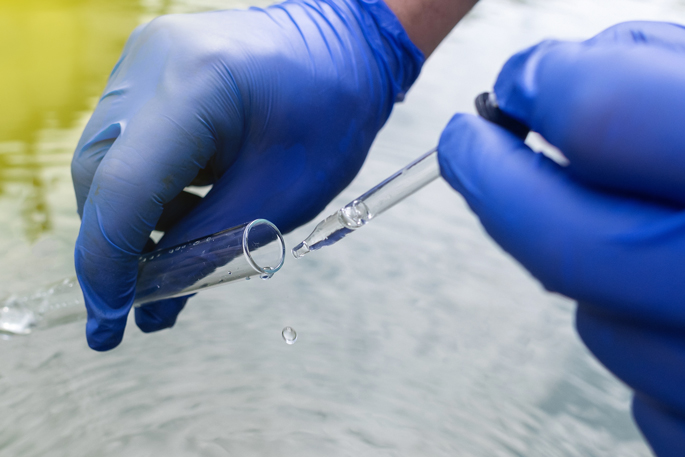Hot on the heels of a plea from the Parliamentary Commissioner for the Environment for more stable funding for monitoring freshwater quality in New Zealand’s rivers, a new research paper suggests such funding needs to increase five-fold to enable more frequent monitoring, or refocus on monitoring fewer sites more frequently
Aotearoa will not know if our water quality is improving for another 20 years unless we make a large investment in our water quality monitoring systems, finds a paper published in January.
Early-January, Parliamentary Commissioner for the Environment Simon Upton pointed out the risks caused by a lack of stable funding for monitoring freshwater quality in New Zealand’s rivers, in a public letter to Judith Collins, Minister for Science, Innovation and Technology.
Such funding needs to increase five-fold to enable more frequent monitoring, or refocus on monitoring fewer sites more frequently, suggests the journal paper, published by the Nature Publishing Group in ‘Scientific Reports’.
Research
The research, funded by the Our Land and Water National Science Challenge, found that our current national monitoring regime doesn’t sample our rivers often enough to provide an accurate reflection of contaminant concentrations. For example, if a river is monitored monthly, and this routine monitoring coincides with above or below average rainfall for a couple of months, this will distort the average contaminant concentrations recorded.
Current policy aims to begin showing improvements in freshwater quality within five years and bring waterways to a healthy state within a generation (around 20 years).
Across the country, actions are being taken by community groups, famers, iwi, and councils to restore the health of our rivers, lakes and groundwater. Our ability to link these on-farm actions with improvements in water quality is limited by our monitoring network, says the paper’s first author Professor Rich McDowell, chief scientist at Our Land and Water.
“Getting both monitoring locations and frequencies right is critical if we want to confirm whether local freshwater restoration actions are working,” says Dr Olivier Ausseil of Traverse Environmental, leader of the Monitoring Freshwater Improvement Actions research programme.
“We rely on the existing water quality monitoring networks to tell us whether water quality is improving,” says Dr Olivier Ausseil, “but the fixed monitoring locations and frequencies offered by these networks mean it can take a long time to detect improvements, and that the link between cause and effect can be difficult to establish.”
“For example, a group of farmers may be making changes to their farms to reduce nutrient losses to streams passing through their farms, but if the closest monitoring site is downstream in the flow of the main river it may not detect any improvement.”
The national-scale analysis has shown that that New Zealand’s current freshwater monitoring regime could detect change in nutrients and clarity in 20 years – on average – for more than 95 per cent of monitored sites, but sampling needs to occur twice as frequently to detect changes in E. coli within 20 years. This would increase the annual cost of sampling by 4.1 times.
To detect change in five years, we would need up to five times as many samples, which would increase the annual cost of sampling by 5.3 times.
Mix of sites
To reduce costs, investment in more frequent monitoring could be focussed on a mix of sites: those where changes in water quality occur rapidly and those that are representative of long-term land use. Emerging sampling technologies also have the potential to reduce costs.
“Our analysis isn’t a criticism of the existing monitoring networks, and we don’t suggest that high-frequency monitoring should be implemented everywhere,” says Olivier. “However, it does illustrate that getting both monitoring locations and frequencies right is critical if we want to confirm whether local freshwater restoration actions are working.”
The research team has created a Monitoring Freshwater Improvements tool to help catchment groups, farmers, iwi and local and central government design freshwater monitoring programmes that can detect improvements in water quality in response to specific freshwater restoration actions.
Over time, improved monitoring programmes could give confidence to farmers and those responsible for catchment water quality that the right actions are being put in the right place.
For more information, see: McDowell, R.W., Noble, A., Kittridge, M. et al. Monitoring to detect changes in water quality to meet policy objectives. Nature: Scientific Reports (22 January 2024); and the Monitoring Freshwater Improvements tool at: monitoringfreshwater.co.nz
Source: https://ourlandandwater.nz/news/more-investment-in-water-quality-monitoring-is-needed/ Author: Annabel McAleer Communications Manager, Our Land and Water. Text in this article is licensed for re-use under Creative Commons Attribution 4.0 International (CC BY 4.0). Originally posted: January 26, 2024.



0 Comments
Leave a Comment